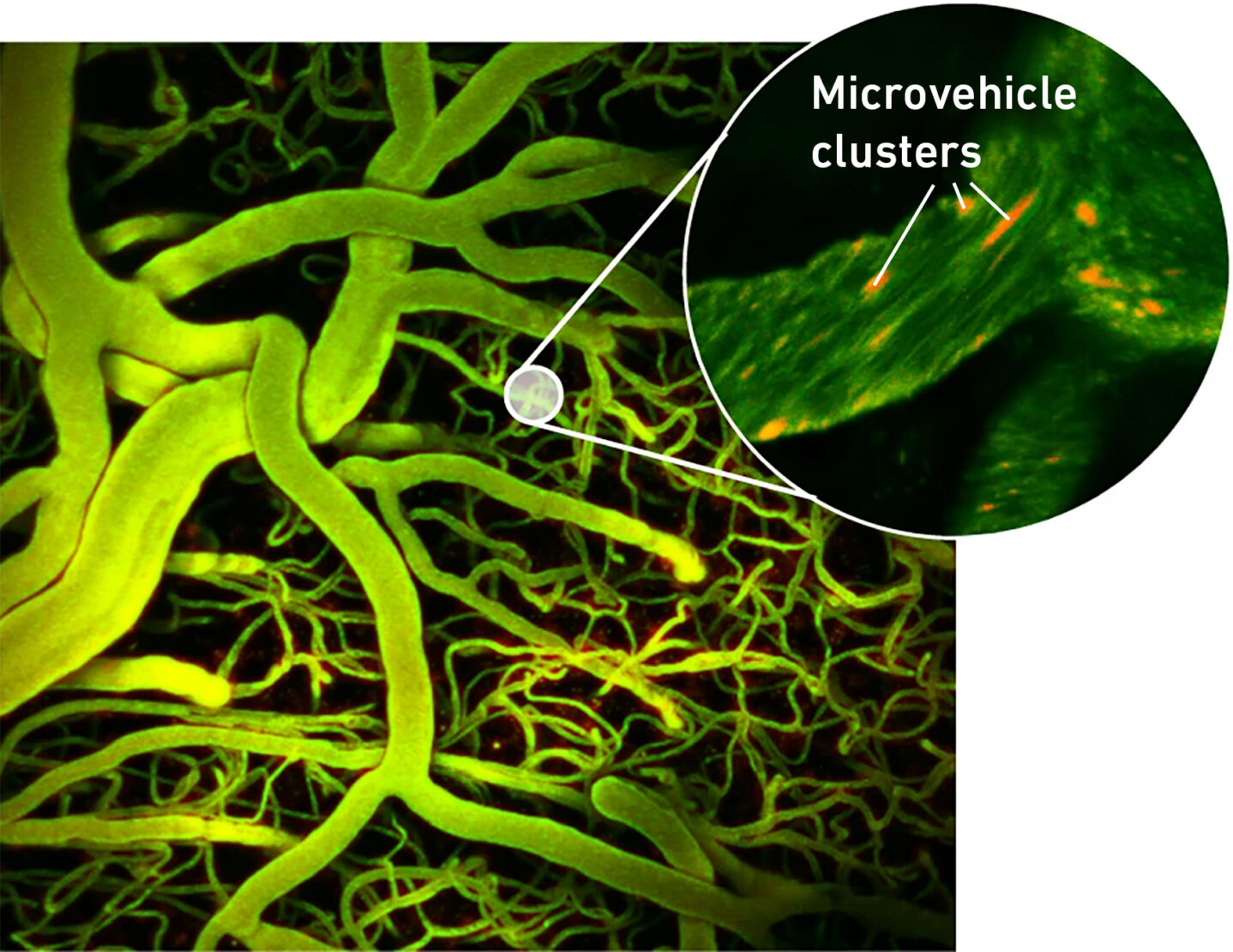Tokyo (SCCIJ) – Delivering drugs with pinpoint precision to areas in the human body is often considered the holy grail of modern medicine. Researchers in Switzerland have come closer to this vision: They steered micro vehicles along blood vessels in the brain.

Blood vessels in the brain with clusters of micro vehicles in orange (microscopy image) (Image: Del Campo Fonseca et al., Nature Communications 2023, edited).
Targeted approach
Brain tumors, brain hemorrhages, and neurological and psychological conditions are often hard to treat with medication. Even when effective drugs are available, these tend to have severe side effects because they circulate throughout the brain and not just the area they are meant to treat.
In light of this situation, researchers have high hopes of one day being able to provide a more targeted approach that would deliver medications to very specifically defined locations. To this end, they are in the process of developing mini-transporters that can be guided through the dense maze of blood vessels.
Ultrasound as method
Now, researchers of the Swiss Federal Institute of Technology in Zurich, the University of Zurich, and the University Hospital Zurich were able to direct microbubbles through narrow vessels in mice brains using ultrasound, marking a substantial breakthrough in the field of medical science.
Compared to alternative navigation technologies such as those based on magnetic fields, ultrasound offers certain benefits. Daniel Ahmed, Professor of Acoustic Robotics at ETH Zurich and supervisor of the study, explains: “In addition to being widely used in the medical field, ultrasound is safe and penetrates deep into the body.”
For their micro vehicle, Ahmed and his colleagues used gas-filled microbubbles coated in lipids – the same substances that biological cell membranes are made of. The bubbles have a diameter of 1.5 micrometers and are currently used as contrast material in ultrasound imaging.
The bubbles are harmless and dissolve once their job is done. In the future, these “vehicles” could be equipped with medications and deliver them to specific points in the brain. This may increase the efficacy of the drugs and reduce their side effects.
Easy to guide
When using magnetic fields, the micro vehicles have to be magnetic, and it’s not easy to develop biodegradable micro vehicles. Moreover, the microbubbles developed by the ETH Zurich researchers are small and smooth. “This makes it easy for us to guide them along narrow capillaries,” says Alexia Del Campo Fonseca, a doctoral student in Ahmed’s group and lead author of the study.
The researchers’ next step will be to attach drug molecules to the outside of the bubble casing for transport. They want to enhance the entire method to the point at which it can be used in humans, hoping it will one day provide the basis for the development of new treatments.
Text: Fabio Bergamin/ETHZ News (Editing by SCCIJ)





























